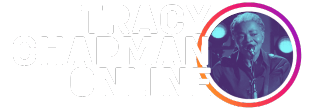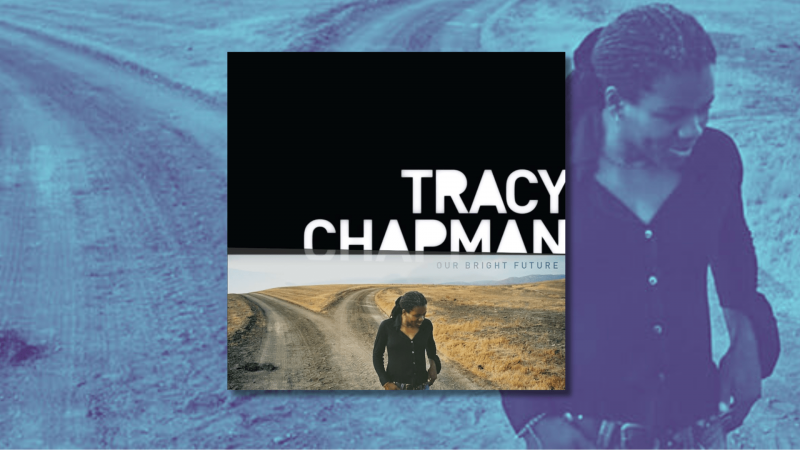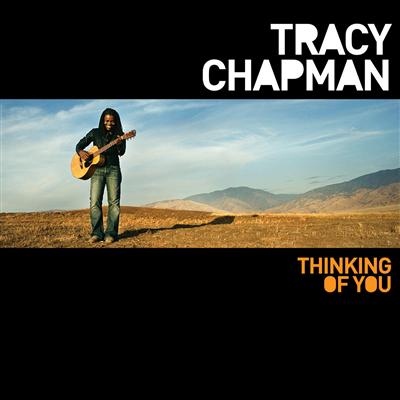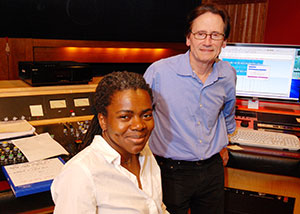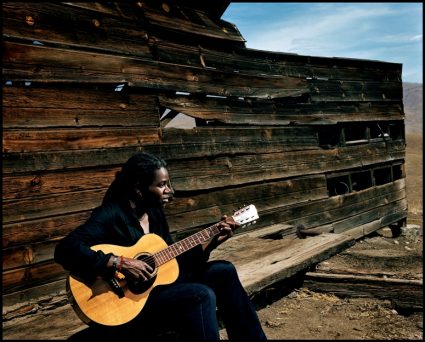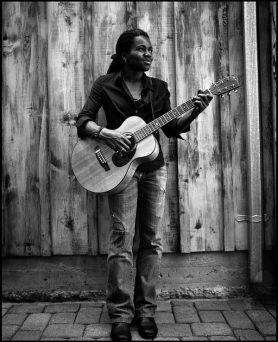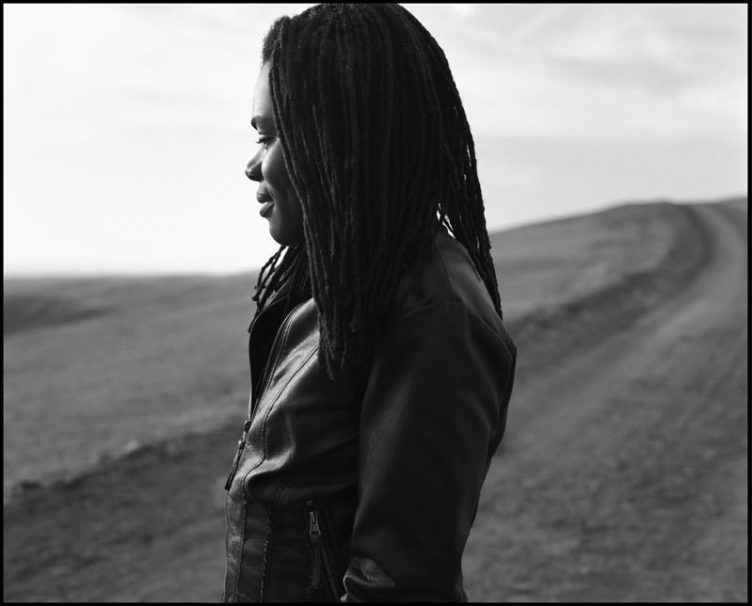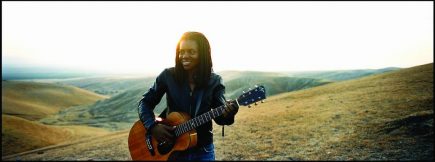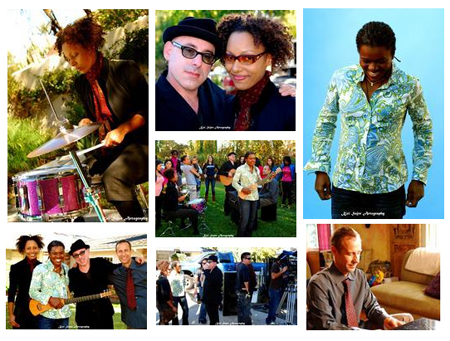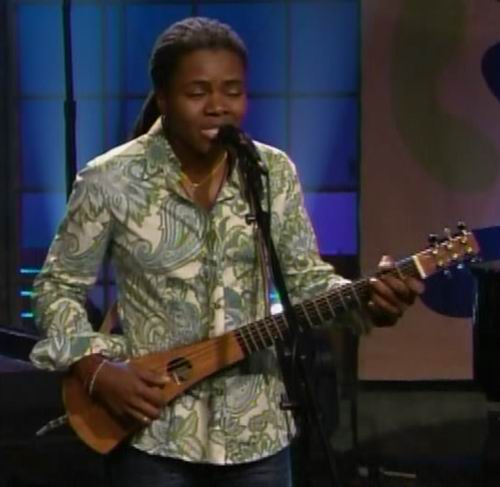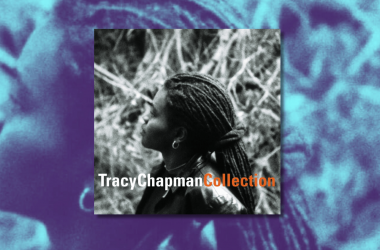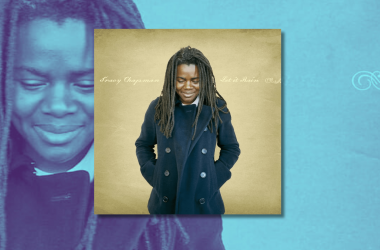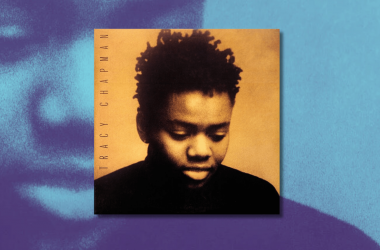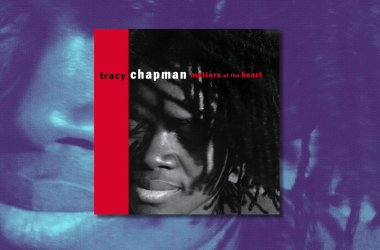Our Bright Future is Tracy Chapman’s eighth album. Recorded in LA during the summer of 2008, Our Bright Future features 11 new songs written by Tracy and co-produced by Larry Klein.
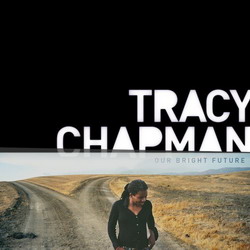 TRACKLISTING
TRACKLISTING
01. Sing For You
02. I Did It All
03. Save Us All
04. Our Bright Future
05. For A Dream
06. Thinking of You
07. A Theory
08. Conditional
09. Something to See (No War)
10. The First Person On Earth
11. Spring
LISTEN TO OUR BRIGHT FUTURE ONLINE
OUR BRIGHT FUTURE RELEASE DATES
- Europe: Nov 10, 2008
- USA: Nov 11, 2008
Order Our Bright Future from Amazon.com
OUR BRIGHT FUTURE SINGLES
“Sing For You” is the first single from Our Bright Future
- Hits the radio: Sept 11, 2008
- iTunes (US): Oct 03, 2008
- Single Release (US): Oct 31, 2008
- Single Release (UK): Nov 03, 2008
“Thinking Of You’ is the second single from Our Bright Future (release in May 2009)
SING FOR YOU MUSIC VIDEO
OUR BRIGHT FUTURE EPK
OUR BRIGHT FUTURE ALBUM CREDITS – THANK YOUS
Many thanks to all the wonderful musicians who played on the record and to Craig Kallman, Matthew Rankin, Gretchen Thomas, Dane Venable and everyone at Atlantic Records.
Special thanks to all my fans, the Fuzzbox crew and to Jared Miller for his recording and engineering assistance.
I am grateful for the support of Henson Recording Studio, Bernie Grundman Mastering, Cutting Edge Audio, Real Guitars, Gryphon Stringed Instruments and everyone who helped make this record possible.
Produced by Larry Klein and Tracy Chapman
Engineer: Helik Hadar
Assistant Engineer: Kevin Mills
Mixing Engineer: Dave Way
Recorded and Mixed at Henson Recording Studios, Hollywood, CA
Mastered by Bernie Grundman at Bernie Grundman Mastering Studio, Hollywood, CA
All songs written by Tracy Chapman
All songs published by Purple Rabbit Music (ASCAP)
Art Manager: Anita King
Art Direction & Design: Matt Taylor varnishstudio.com
Photography: James Minchin III
OFFICIAL PROMO SHEET (Atlantic Records)
On “Sing For You,” the upbeat opening track of Our Bright Future, Tracy Chapman – now marking her 20th year as a recording artist – briefly yet fondly looks back at the way music has shaped her life. Throughout most of her eighth studio album, however, Chapman remains very much rooted in the present, addressing political and/or social conflicts in the world as well as private skirmishes of the heart. She gracefully melds simple, small-band arrangements with powerful universal emotions, and over the course of eleven songs reveals layers of meaning, both troubling and hopeful, in the album title she has chosen.
While making her last album, 2005’s Where You Live, Chapman remained in her adopted home of San Francisco, creating an ad-hoc studio out of a rehearsal space. This time, she spent two months in Los Angeles with co-producer Larry Klein and a multi-generational crew of sought-after session players, recording at Henson Studios on the storied lot once owned by Charlie Chaplin and later A&M Records. It was an auspicious locale for Chapman at this milestone juncture in her career: the lot, where Chapman previously made her 1992 album, Matters of the Heart, now houses production suites and studios for many artists whom she has worked with or encountered over the last two decades. As she recalls, “It was as if I were taking my turn on This Is Your Life. Around every corner was someone that I knew in some way.”
In fact, Klein, a 2007 Album of the Year Grammy recipient for his co-production of Herbie Hancock’s River: The Joni Letters, had played bass on Chapman’s debut disc as well as its follow-up, Crossroads, and subsequent efforts. Chapman says, “He’s a great musician and he’s also very funny, which is something I had always remembered. From years of being in the studio, I’ve come to understand that the process is as important as the result. I wanted to have fun making this record, and it’s always good to have someone who will find the humor in a situation when you have a moment of stress, and who can give everyone some perspective. Larry and I always got along that way.”
Klein persuaded keyboardist Larry Goldings (John Mayer, Madeleine Peyroux) and drummer Steve Gadd (David Sanborn, Paul Simon) to play on the sessions after he learned that the pair was about to go on a break from touring with James Taylor. Joining them was veteran guitarist Dean Parks (Michael Jackson, B.B. King). Performing on other tracks were drummer Joey Waronker (Beck, Nelly Furtado), keyboardist Rob Burger (Norah Jones, Rufus Wainwright), and guitarist Joe Gore (Tom Waits, PJ Harvey, the Eels). In effect, Chapman had the opportunity to collaborate, mostly live in the studio, with two distinct “bands” – the veteran session men in one, the younger guys in another – with both combos anchored by Klein on bass. Despite the varied line-ups, the result is a single, harmonious sound. A subtly soulful groove underpins just about everything, and on “A Theory,” there’s even a hint of countrified twang.
For longtime fans, “Sing For You” may evoke memories of the first time they heard Chapman’s riveting, forthright voice back in 1988 – when she appeared seemingly out of nowhere to shake up the radio airwaves and MTV with her storytelling prowess, inspiring a modern revival of the socially conscious, singer-songwriter movement. For Chapman herself, she’s reaching even farther back on the song, channeling something deeper, more all-encompassing: “People have asked, who is it for, who were you singing to? For me, I was remembering so many different occasions, either when someone sang for me or I was singing – maybe to the songs on the radio with my friends or my sister, or singing in the car, or being at a party dancing. It could be a about a parent singing to a child. All those things came to mind.”
Other tracks may also seem intriguingly autobiographical, but Chapman is always aiming for a larger point, a common connection with her listeners. On “Thinking Of You,” she envisions someone befuddled by the irrationality of “obsessive, unrequited love”: “I imagined a scientist who had this problem and was forced to figure out a way to bear it, and all of these scientific ideas came to mind that this character might use in describing his predicament.” The world must be flat, he forlornly decrees, otherwise his lover would have come back around to him. More tongue-in-cheek is the woozy cabaret jazz of “I Did It All,” which takes an amused look at the culture of self-exposure, as a cocktail-addled character tries to engage someone in the story of her not-quite-outrageous-enough life.
Survival is a prominent – and poignant – theme on Our Bright Future. “For A Dream” deals movingly with an unnamed family tragedy. It’s less about the circumstance of what occurred than the will of the narrator to move on: “I never state in any obvious way what has happened in this family; it’s alluded to as being something tragic. This character, rather than being broken by it, is trying to sort through it and come to a place where he or she can carry on and bear it, questioning or acknowledging what happened but being able to move on, to survive.” On “The Last Person on Earth,” the narrator finds him or herself alone and seemingly abandoned while life-threatening waters rise all around. “It was inspired in part by hurricane Katrina,” says Chapman. “Everyone saw what was happening in New Orleans; people were left to fend for themselves in a time of great need and crisis.”
“Something To See (No More War)” somewhat wistfully contrasts the world as it is with the world as it could be. Chapman first imagined the arrangement as more of an anthemic rocker, but the final track has a gentler, though no less compelling feel: “I can’t remember which take it was, but we were playing and it just felt right. Whatever I had in my head was still there, but I realized we had made a version of the song that felt like it helped express the sentiment and the lyrics more fully. Though we never had it in mind at the time, it reminds me of the Staples Singers. I always loved the Staples, the sound and the feel of their records; they really drew you in, engaged you, with the tone of their songs. After living with the track a bit I realized it was the right way to go musically. There’s nothing about it I would change. It’s kind of a quiet plea or prayer.”
After completing the album, Chapman prepared to leave for Europe on her first solo tour in a decade. Commanding a stage entirely on her own reminds us why we were so immediately drawn to her 20 years ago. Our Bright Future – with its questions and challenges, as well as its hopes for better times ahead – illustrates why we always return.
Beginning twenty years ago with the release of her eponymous debut, Tracy Chapman has created a body of work that has been as consistently compelling as it is honest and uncompromising, eloquently telling stories with perennial appeal that are at once personal and universal. Our Bright Future will be released on November 11, 2008. Recorded this summer in Los Angeles with Larry Klein (Herbie Hancock, Joni Mitchell, Madeleine Peyroux), the album comprises 11 new songs written by Tracy. Our Bright Future is Tracy’s eighth studio album and her first since 2005’s acclaimed Where You Live.
Joining Tracy in the studio for the recording of Our Bright Future were guitarists Dean Parks (B.B. King, Anita Baker) and Joe Gore (Tom Waits, P.J. Harvey), drummers Steve Gadd (David Sanborn, Paul Simon) and Joey Waronker (R.E.M., Smashing Pumpkins), pianists Larry Goldings (John Mayer, Madeleine Peyroux) and Rob Burger (Norah Jones, Lucinda Williams), violinist Carla Kihlstedt and Larry Klein on bass. The album was mixed by Dave Way and mastered by Bernie Grundman.
Since her breakthrough performance at Nelson Mandela’s 70th birthday concert in London in 1988, Tracy has appeared frequently in support of social and humanitarian causes, including Amnesty International’s Human Rights Now! Tour, the annual Bridge School benefit concerts, the Nelson Mandela Free South Africa Concert, Farm Aid, Tibetan Freedom Festival, Vote For Change, the Driving Votes tour, San Francisco AIDS Foundation, and many others.
Our Bright Future marks the latest stop in a musical journey that began in 1988 with the release of Tracy Chapman. The multi-platinum debut earned three Grammy Awards and featured the classic singles “Fast Car”, ‘Talkin’ Bout A Revolution” and “Baby Can I Hold You”. It went on to become one of the most successful debuts of all time, selling more than 18 million copies worldwide. To this day, it still makes regular appearances on album charts around the world, and in the UK it is the most successful album by a female artist in chart history, having spent almost 200 weeks on the chart.
Impervious to trends, Tracy has commendably stayed her musical course, earning the approbation of fans, critics and peers for her subsequent albums: 1989’s multi-platinum Crossroads, 1992’s Matters Of The Heart, 1995’s multi-platinum New Beginning (which featured the Grammy-winning single “Give Me One Reason'”), 2000’s platinum Telling Stories, 2001’s multi-platinum Collection, 2002’s platinum Let It Rain, and 2005’s Where You Live.
To coincide with the release of Our Bright Future Tracy will begin a solo tour of Europe in November. The dates mark Tracy’s first solo tour in over a decade and will give audiences a rare chance to hear the work of this truly individual musician’s celebrated 20-year career performed in an intimate and memorable way.
OUR BRIGHT FUTURE REVIEWS
UK & US Press
- The Times (Victoria Segal) :
Those who haven’t kept up with Tracy Chapman since her late1980s heyday might be surprised by the gentle hush-and-rustle of her eighth studio album.Her strident earnestness has been tempered, leaving a wry warmth that turns even such political numbers as “Something to See (No War)” into something intimate and beguiling. A highlight is the older-and-wiser sigh of “A Theory”. - The Sun (PC): TRACY CHAPMAN – Our Bright Future – ****
A BEAUTIFUL collection of tracks which sees Chapman re-emerge as the powerhouse of musical ability and lyricism that she undoubtedly is.On tracks such as whimsical single “Sing For You”, the artist takes a brief moment to reflect on her two decade career. But as a general rule this album marks a distinct atmosphere of optimism for the future, fitting as she has bewstowed so much faith in the new US president.The impressive collection of session musicians who worked in the studio with Chapman allow the 11 newly-penned tracks to be heard at their best, with her recognisable voice forming the foundation of this rock-steady album. - Evening Standard (Pete Clark) – Tracy Chapman – Our Bright Future (Elektra) – ***
It’s been 20 years since “Fast Car” first alerted the world to Tracy Chapman. Eight albums later, not a lot has changed. That voice is intact, although her lyrical concerns are now more focused on love. A posse of veteran players ensure that Our Bright Future has a professional sheen, everything tasteful and underplayed. This type of well-mannered pop/folk is perhaps not to everyone’s taste, but if you are in a quiet mood, these sweet and earnest melodies might touch a lost chord.
- Record Collector (Michael Heatley) – Move over Norah, Tracy’s back to show how it’s done – ****
Tracy Chapman, the overnight star of 1988 thanks to her impromptu guitar-and-vocal spot on the Nelson Mandela birthday show, has produced a modest eight albums in the two succeeding decades. Maybe that’s wise. Like our own Joan Armatrading, Chapman’s undoubted songwriting gifts have sometimes been obscured by what non-fans call a “sameness”. She is what she is, however, and, on this evidence, still has much to offer.That Chapman’s promoting Our Bright Future with her first solo tour for a decade underlines the fact that this is all about the songs. Perhaps Larry Klein’s influence (the one-time Mr Joni Mitchell, who replaces Tchad Blake as coproducer) that helps add a Mitchell-esque purity to the likes of “For A Dream”. Certainly, Chapman has never sounded better, managing to combine the confessional with the compellingly enigmatic, allowing listeners only so far, and no further. A crack team of studio musos – notably guitarist Dean Parks, drummer Steve Gadd and bassist Klein – add just enough to frame the songs effectively. “I Did It All”’s wry lyrics suggests that Tracy Chapman has retained her appetite by taking her career at her own pace, rather than succumbing to the pitfalls of fame. Our Bright Future is, on this evidence, aptly titled. - Cleveland.com: Grade: A-
Twenty years after she took the world by storm with “Fast Car,” ex-Clevelander Chapman continues to play to her strengths on her eighth album. Songs are quietly counted off, the folk-rock arrangements are understated and her delicate yet undeniable voice compels you to lean in and listen, whether Chapman is striking a personal chord (“Sing for You”) or waxing socially conscious (“The Last Person on Earth”). The jazz-tinged ditty “I Did It All” proves she has a sense of humor, too. In stores Tuesday, Nov. 11.
- Billboard (Evie Nagy):
Twenty years after her self-titled debut, Tracy Chapman remains true to her musical calling: soul-rich folk melodies around a voice of honesty and nuance that nails ambivalence like no other. Chorusless opener “Sing for You” is one of Chapman’s signature sad yet sunny tunes of love gone by, building straight from a hooky verse to a strong, marching bridge. “I Did It All,” a sweet, shuffling saloon ballad, reflects the slide guitar-heavy country leanings of the set, and “Thinking of You” is a sexy, noisy cry about the pain of obsessing over a lover. “A Theory” is a charming peek at Tracy with a crush, while the title track suggests that along the broad range of emotions that Chapman has deftly expressed with her music, she is today most closely aligned with cautious optimism.
- Metro.co.uk (Claire Allfree) – Tracy Chapman: Our Bright Future – ****
Now on her eighth studio album, Tracy Chapman is unlikely to produce anything so startling as her 1988 debut but she remains a thoughtful songwriter who excels at minting fresh-sounding music from often modest material.More rootsy than her recent output, Our Bright Future blends the political with the human, mixing songs such as the title track (an ambiguously titled lament for lost hopes) and the more upbeat “Something To See (No War)” with plangent love songs such as “Sing For You”. “I Did It All”, a lurching cabaret anthem about a drunken, faded star, strikes a theatrical note of humour but Chapman’s real skill is to mix understatement with absolute precision and these 11 softly melodic songs, framed by subtly poised jazz and country arrangements, quietly map out the human heart in ways that feel newly true. - Boston Globe (Ken Capobianco) – Tracy Chapman – Our Bright Future: ESSENTIAL “I Did it All”
What has marked Tracy Chapman’s work over the course of her two-decade career is her emotional intensity and clarity of vision, and both are in evidence on this fine new disc, her first in three years. Chapman’s early success positioned her as a straight-up pop singer, but at heart she’s a true, determined folkie capable of combining the secular with the spiritual, as she often does here (“Save Us All” and the title track). The songs are short and focused; only a couple, especially “Thinking of You,” meander without resolving. Coproduced by veteran Larry Klein, the production is so crisp it makes your eyes sting. The songs revolve around love, commitment, and faith, all popular staples in her canon. The best, like “Sing for You,” are tuneful and soul-baring, a rare and beautiful combination. There’s a lovely curveball in the cabaret-tinged piano-based beauty “I Did It All,” a remembrance of decadent days with sweet instrumental embellishments. A folk singer with genuine soul, Chapman proves over and over again that she’s also an artist of the first order. - The Guardian (Liz Hoggard) – Tracy Chapman, Our Bright Future – ***
The Grammy-winner has a worthy reputation – and, yes, songs namecheck Katrina, Obama et al – but there’s also a playful, reflective quality as Chapman looks back at the way music has shaped her life. She’s terrific on obsessive love, while on “Conditional”, a riposte to commitment-phobes, she rails, “There are strings attached… I want something back.”
- Washington Post: Chapman’s ‘Future’ rooted in the past
It has been two decades since Tracy Chapman burst into pop consciousness, launched improbably from the coffeehouses of Cambridge, Mass., to the top of the charts with her eponymously titled debut.While she has a reputation as a singer of politically charged folk songs, she has always stood on firmer ground as a poet of romantic longing and loss. Her haunting alto, shot through with loneliness, seems to quaver perpetually on the edge of despondency. Her best-loved songs, including “Fast Car” and “Give Me One Reason,” portray women scratching out doomed lives on the margins in much the same way Bruce Springsteen gives voice to burned-out high school heroes – although with considerably less brio.Miss Chapman doesn’t stray far from her singer-songwriter roots on Our Bright Future, her eighth full-length studio release and her second for Atlantic Records. Yet anyone who hasn’t followed her career since her last big commercial success – New Beginning from 1996 – will notice a wry cynicism bordering on fatalism in many of the tracks.”For a Dream” has a gentle, soothing guitar part with a persistent hum of organ underneath, but Miss Chapman’s lyrics reflect turmoil bubbling up from the dulcet strains. She sings, “I picture us together, framed in gold leaf/ On the mantel with the others, one big happy family/ But that snapshot can’t be found, and I don’t trust my memory/ It’s alright, it’s alright, for a dream.”Similarly, the “bright future” alluded to in the title track is not one offered as forthcoming. Indeed, Miss Chapman seems oddly out of step with a political moment that has brought earnest expressions of joy to most folk-rock aficionados. The antiwar “Our Bright Future” starts with an ominous rumble of guitar and a few eerily plucked electric guitar notes, picking up with organ and a strummed bouzouki – an instrument Miss Chapman has played on her records throughout her career. She sings, “To my father, what have you done/ To the children, born innocent/But come to harm, for dreams of glory.“She sounds a cheerier, more utopian note on the infectiously upbeat “Something to See.” Here, Miss Chapman balances a lush church-organ melody with a simple, easygoing beat. It’s a minimalist sonic canvas, leaving ample room for the affirmative finger-snapping of appreciative folkies.”I Did It All,” the second of the CD’s 11 tracks, isn’t among the best songs on the album, but it’s certainly the most uncharacteristic. Written as a boozy cabaret number, the song features an easy tickle of piano and a steel brush skittering over a high-hat. The song is a kind of “Non, je ne regrette rien” for the Lindsay Lohan generation, with Miss Chapman singing, “Slept in late, stayed up for days/ Partied hard did my twenties in a haze/Smoked second-hand in crowded bars/ With the A-list of B-list movie stars.”She’s channeling a personality, not offering autobiographical testimony. Yet it’s enjoyable to hear Miss Chapman apply her talents to a treatment of a socially irredeemable character for a change. - Billboard.com : SINGLE: SING FOR YOU (ATLANTIC)
It’s hard to believe it’s been 20 years since Tracy Chapman drove onto the scene in her “Fast Car.” Back then she was a breath of fresh air, injecting the pop world with an earthy, folk-rock sensibility. Since, she has consistently released quality albums that make the mind think and the heart feel, including another top 10 smash on the Billboard Hot 100 (1996’s “Give Me One Reason”). Chapman’s new single, from her optimistically titled CD “Our Bright Future,” finds the singer in pop lullaby mode, reminiscing on simpler times when she would sing along with the radio to her lover. This is exactly the type of song that Jason Mraz would score big with at pop radio, with its sunny, adhesive “doo-doo-doos” and accessible toe-tapping rhythm section.
German Press
- Welt: Tracy Chapman: Our Bright Future (Elektra)
Pünktlich mit den revolutionären Fantasien ist auch Tracy Chapman wieder da. 20 Jahre nach “Talkin’ ‘Bout Revolution”. Wenn ein Schwarzer Präsident wird in Amerika, darf auch an eine schwarze Tradition der Folkmusik erinnert werden. Aan Odetta, Richie Havens und natürlich auch an Tracy Chapman. Wenn sie “Save Us All” singt, liegt das Heil im frischen Bluegrass. Es geht um die Glaubenslehren und entsprechende Hoffnungen in “For A Dream” und “Something To See (No War)”. Es geht ihr um die strahlende Zukunft, und daran glaubt sie tatsächlich. Jemand muss den Job ja machen.
Spanish Press
- Andalucia Informacion:
Siempre he sentido una fascinación y predilección muy especial por el trabajo de Tracy Chapman, y la misma se ha fortalecido con el paso del tiempo, a medida que la repercusión de su obra iba aminorando desde el punto de vista comercial. Es más, esa fascinación entiendo que no se refiere ya sólo a sus composiciones, sino que contempla el plano personal.Acaban de cumplirse 20 años desde la publicación de su primer trabajo, uno de los discos más vendidos del año gracias a piezas magistrales como “Fast Car”, “Baby can I hold you” o “Talkin’Bout A Revolution”, y lo cierto es que a estas alturas seguimos sabiendo tantas cosas de Tracy Chapman como entonces; si acaso, que en el transcurso de la última década ha hecho más presente en sus canciones la presencia de Dios, o que mantuvo una relación con la escritora Alice Walker -desvelada por esta última a posteriori-. Por contra a lo que ocurre con cualquier otra estrella de la música, Chapman ha logrado que la estricta vinculación mantenida con sus seguidores se limite al campo musical.Este 11 de noviembre publica su nuevo trabajo, Our bright future (Nuestro brillante futuro), en el que se nos muestra mucho más delgada, aunque con el rostro esperanzado, incluso satisfecho, acorde con una trayectoria en la que ha forjado un estilo propio -marcado por la particularidad de su voz- y de una progresiva madurez que, si bien la ha distanciado de las grandes masas de sus inicios, desprende una delicada evolución puesta de manifiesto a partir de un disco que fue toda una declaración de intenciones, New beginning (Nuevo comienzo), publicado en 1995, con el que rompía con cierta tendencia monocorde derivada del éxito de su primer disco. Our Bright Future puede marcar también un nuevo comienzo, al menos lo es desde el plano de la composición, de los arreglos, de la propia cultura musical atesorada por Chapman, que la lleva a recorrer diferentes estilos, a veces sólo insinuados, otras de una preclara inspiración, y basados en la tradición musical norteamericana, que convierten este trabajo en algo excepcional. Ella lo sigue siendo.
See also
- Our Bright Future Lyrics
- Our Bright Future Guitar Tabs
- Our Bright Future European Solo Tour
- Our Bright Future European and US Summer Tour

